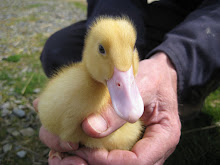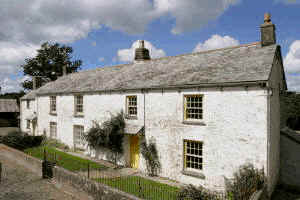 I have mentioned culm a few times, and mountainear has asked me to explain what I mean by the term. I will try my best; just remember that I am no ecologist and had no idea what it was myself two years ago.
I have mentioned culm a few times, and mountainear has asked me to explain what I mean by the term. I will try my best; just remember that I am no ecologist and had no idea what it was myself two years ago.The Culm is an area of North and West Devon. It is characterised by "an undulating, open, remote rural landscape, sparsely wooded and dominated by livestock farming. Intricate steep valley systems form rolling ridges feeding into wider major river valleys. Steep rugged coastline, much of which falls within the North Devon Area of Outstanding Natural Beauty."
So that's The Culm. Which is not the same as culm grassland. Culm grassland is found in The Culm area and is Purple Moor-grass and rush pasture that is home to many interesting and rare species of plant and animal life. You find Purple Moor-grass on poorly drained, usually acid soils with high rainfall, which explains its ubiquity in Ireland, and until recent years in Devon before much of it had been drained and ploughed. Because there is considerably less of it now than there used to be, Defra and Natural England are trying to encourage its maintenance, re-creation and restoration. Why do they want to maintain this shrinking landscape? There are a huge number of plant species in addition to the Purple-Moor grass in these patches of land, including wonderfully named plants such as Bog asphodel, Bugle, Devil's-bit scabious, Hemp-agrimony, Lesser water-parsnip, Ragged-robin, Southern Marsh and Heath Spotted Orchids, Sneezewort and Whorled caraway, to name a few. These plants support some of the loveliest and increasingly rarest of critters. Curlews and Reed Bunting love this type of landscape, Kestrels and Barn Owls hunt over culm where voles are to be found, Marbled White and Marsh Fritillary butterflies thrive here as does the Narrow-bordered Bee Hawk-moth.
To maintain the grassland for these diminishing species you need to have the grass grazed by cattle at the right time of year - summer and autumn, or in January careful swaling of the dry thatch that is formed by the Purple Moor-grass, to encourage new growth in spring.
On the farm there is a patch of culm grassland that is just over an acre, a large bow-tie (or as I prefer to think of it, dog-bone) shaped glade surrounded by woodland. It has been fenced so that access to it by sheep and cattle can be controlled, and in summer it is incredibly difficult to walk through. It is thigh-high and tussocky and you have to wade through it and be very careful where you place your foot to avoid twisted ankles and squashing the orchids. Deer hide in the long grass and I long to come across a fawn.
The Devon Wildlife Trust think this small patch is bursting with interesting species and want to do a full survey. I can't wait.
Here endeth the lesson.

















7 comments:
nice blog!
Is there really a plant called 'sneezewort'? I dread to think what it must look like.
Lovely post. I kept hearing David Attenborough's voice in my head as I was reading!
DM - sneezewort is a pretty white flower - nought snotty about it!
www.plantpress.com/wildlife/o794-sneezewort.php
Ooh, that's rather exciting.
The environmental bods are keen on one of the horse fields here which also is home to those wee purple orchids and a variety of rare and wonderous things...
Thank you. Much enlightened. Look forward to updates and results of the survey.
It sounds so very special. What a priviledge to be its custodian.
Do take a photo of your orchids M&M and put it on your blog...
M'ear - it was a hidden treasure and is now blooming. I feel VERY lucky indeed to be looking after it for a while.
I wonder if we have a culm in North Cornwall.
On one of the cliff walks on protected land, you can find St John's Wort ( Hypericum Perforatum ). Natural alternative to prozac.
Very interesting post. Thank you.
Post a Comment